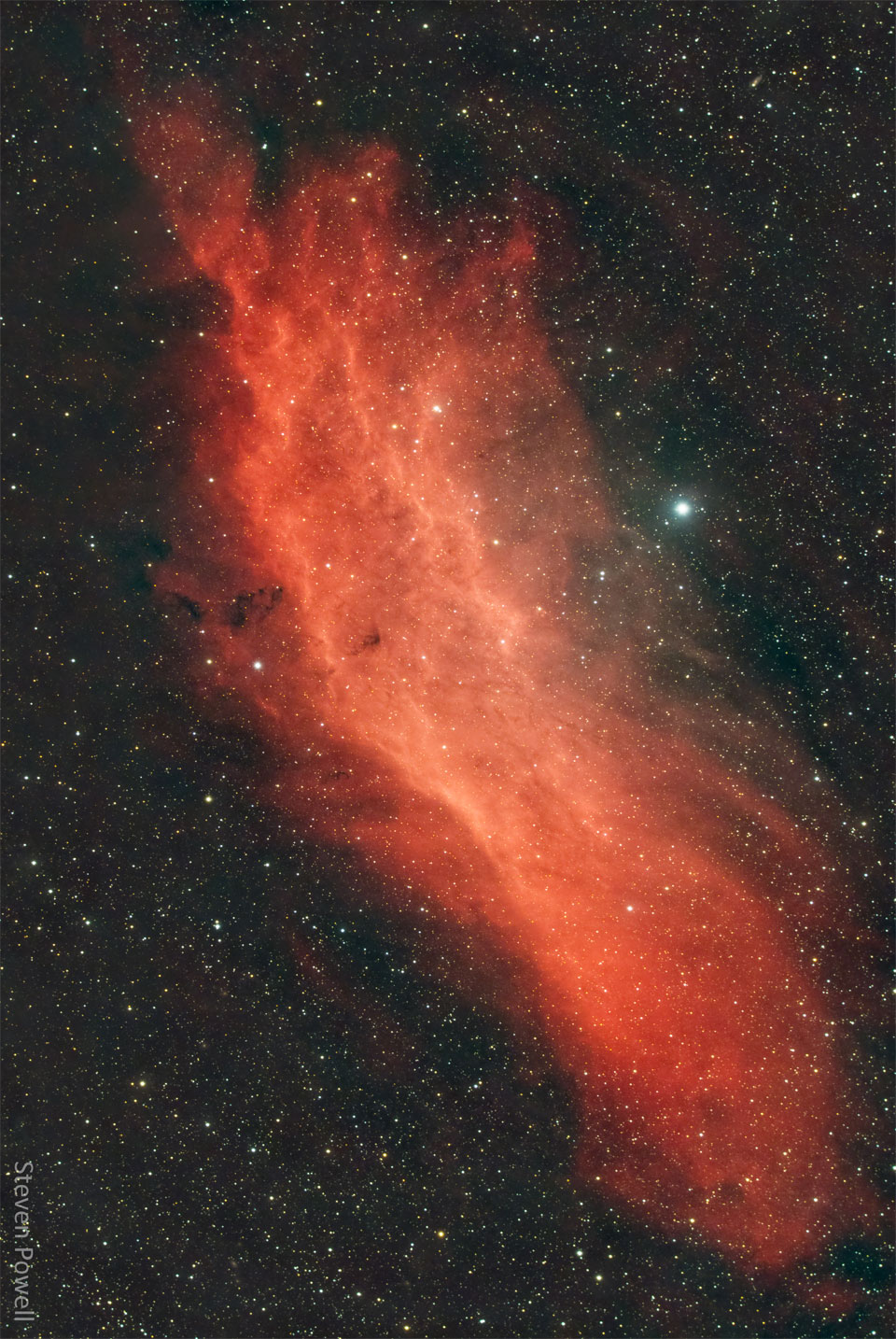Frank Vincent Zappa (December 21, 1940 – December 4, 1993) was an American musician, composer, and bandleader. His work is characterized by nonconformity, free-form improvisation, sound experimentation, musical virtuosity and satire of American culture. In a career spanning more than 30 years, Zappa composed rock, pop, jazz, jazz fusion, orchestral and musique concrète works; he also produced almost all of the 60-plus albums that he released with his band the Mothers of Invention and as a solo artist. Zappa also directed feature-length films and music videos, and designed album covers. He is considered one of the most innovative and stylistically diverse musicians of his generation.
As a mostly self-taught composer and performer, Zappa had diverse musical influences that led him to create music that was sometimes difficult to categorize. While in his teens, he acquired a taste for 20th-century classical modernism, African-American rhythm and blues, and doo-wop music. He began writing classical music in high school, while at the same time playing drums in rhythm and blues bands, later switching to electric guitar. His debut studio album with the Mothers of Invention, Freak Out! (1966), combined songs in conventional rock and roll format with collective improvisations and studio-generated sound collages. He continued this eclectic and experimental approach whether the fundamental format was rock, jazz, or classical.
Zappa’s output is unified by a conceptual continuity he termed “Project/Object”, with numerous musical phrases, ideas, and characters reappearing across his albums. His lyrics reflected his iconoclastic views of established social and political processes, structures and movements, often humorously so, and he has been described as the “godfather” of comedy rock. He was a strident critic of mainstream education and organized religion, and a forthright and passionate advocate for freedom of speech, self-education, political participation and the abolition of censorship. Unlike many other rock musicians of his generation, he disapproved of recreational drug use, but supported decriminalization and regulation.
Zappa was a highly productive and prolific artist with a controversial critical standing; supporters of his music admired its compositional complexity, while detractors found it lacking emotional depth. He had greater commercial success outside the US, particularly in Europe. Though he worked as an independent artist, Zappa mostly relied on distribution agreements he had negotiated with the major record labels. He remains a major influence on musicians and composers. His many honors include his posthumous 1995 induction into the Rock and Roll Hall of Fame and the 1997 Grammy Lifetime Achievement Award.
see full post...Bennie Ross “Hank” Crawford, Jr. (December 21, 1934 – January 29, 2009) was an American alto saxophonist, pianist, arranger and songwriter whose genres ranged from R&B, hard bop, jazz-funk, and soul jazz. Crawford was musical director for Ray Charles before embarking on a solo career releasing many well-regarded albums for labels such as Atlantic, CTI and Milestone.
Crawford was born in Memphis, Tennessee, United States. He began formal piano studies at the age of nine and was soon playing for his church choir. His father had brought an alto saxophone home from the service and when Hank entered Manassas High School, he took it up in order to join the band. He credits Charlie Parker, Louis Jordan, Earl Bostic and Johnny Hodges as early influences.
Crawford appears on an early 1952 Memphis recording for B.B. King, with a band including Ben Branchand Ike Turner.
see full post...The Triangulum Galaxy is a spiral galaxy 2.73 million light-years (ly) from Earth in the constellationTriangulum. It is catalogued as Messier 33 or NGC (New General Catalogue) 598. With the D25 isophotal diameter of 18.74 kiloparsecs (61,100 light-years), the Triangulum Galaxy is the third-largest member of the Local Group of galaxies, behind the Andromeda Galaxy and the Milky Way.

Alan Parsons OBE (born 20 December 1948) is an English audio engineer, songwriter, musician and record producer.
Parsons was the sound engineer on albums including the Beatles‘ Abbey Road (1969) and Let It Be(1970), Pink Floyd‘s The Dark Side of the Moon (1973), and the eponymous debut album by Ambrosia in 1975. Parsons’s own group, the Alan Parsons Project, as well as his subsequent solo recordings, have also been commercially successful. He has been nominated for 13 Grammy Awards, with his first win occurring in 2019 for Best Immersive Audio Album for Eye in the Sky (35th Anniversary Edition).
see full post...Pleasant Joseph, known as Cousin Joe, (December 20, 1907 — October 2, 1989) was a New Orleans blues and jazz singer, famous for his 1940s recordings with Sidney Bechet and Mezz Mezzrow.
He was born in Wallace, Louisiana, United States, and worked at Whitney Plantation throughout his childhood.
Until 1945, Cousin Joe toured Louisiana; that year he was asked to take part in the King Jazz recording sessions organized by Mezzrow and Bechet.
In the 1970s, Cousin Joe toured extensively throughout the UK and Europe, both individually and as part of the American Blues Legends ’74 revue organised by Big Bear Music. He also recorded the album Gospel-Wailing, Jazz-Playing, Rock’n’Rolling, Soul-Shouting, Tap-Dancing Bluesman From New Orleansfor Big Bear.
Cousin Joe died in his sleep from natural causes in New Orleans, at the age of 81. He was survived by his wife Irene Joseph, son Michael and his three grandchildren Rahsaan, Mignonne and Jarrell.
see full post...Lawrence Elliott Willis (December 20, 1942 – September 29, 2019) was an American jazz pianist and composer. He performed in a wide range of styles, including jazz fusion, Afro-Cuban jazz, bebop, and avant-garde.
Willis was born in New York City. After his first year studying music theory at the Manhattan School of Music he began performing regularly with Jackie McLean. After he graduated he made his first jazz recording, McLean’s Right Now! in January 1965, which featured two of Willis’ compositions. His first recording of any type, however, was as a singer with the Music and Arts Chorale Ensemble, performing an opera by Aaron Copland under the direction of Leonard Bernstein. He decided to concentrate on jazz because of the difficulties African-American musicians had in finding work in concert music.
Throughout his career he performed with a wide range of musicians, including several years as keyboardist for Blood, Sweat & Tears (beginning in 1972). He spent several years as pianist for trumpeters Nat Adderley and Woody Shaw as well as long and productive tenures with Roy Hargrove and with Jerry Gonzalez and his Fort Apache Band. His late recording with Paul Murphy, Exposé, demonstrated the fusion principles of bebop and avant-garde jazz. His composition “Sanctuary” began exploring works employing strings. After a successful performance in Frank Lloyd Wright‘s Annie Pfieffer Chapel at Florida Southern College‘s Child of the Sun Jazz Festival he was commissioned to write a full-scale orchestral work for jazz trio and orchestra. He worked with Hugh Masekela on a South African Suite of music and interpreted Miles Davis‘ work. He was in the Round About Midnight tour of Miles Davis’ music. He received the Don Redman award in 2011, and the Benny Golson Jazz Master Award at Howard University in 2012.
He died of an aneurysm in Baltimore at the age of 76.
see full post...the outline of this molecular space cloud echoes the outline of the state of California, USA. Our Sun has its home within the Milky Way’sOrion Arm, only about 1,000 light-years from the California Nebula. Also known as NGC 1499, the classic emission nebula is around 100 light-years long. On the featured image, the most prominent glow of the California Nebula is the red light characteristic of hydrogen atoms recombining with long lost electrons, stripped away (ionized) by energetic starlight. The star most likely providing the energetic starlight that ionizes much of the nebular gas is the bright, hot, bluish Xi Persei just to the right of the nebula. A regular target for astrophotographers, the California Nebula can be spotted with a wide-field telescope under a dark sky toward the constellation of Perseus, not far from the Pleiades.

Kermit Ruffins (born December 19, 1964) is an American jazz trumpeter, singer, and composer from New Orleans. He has been influenced by Louis Armstrong and Louis Jordan and says that the highest note he can hit on trumpet is a high C. He often accompanies his songs with his own vocals. Most of his bands perform New Orleans jazz standards though he also composes many of his own pieces. Jon Pareles of The New York Times wrote, “Mr. Ruffins is an unabashed entertainer who plays trumpet with a bright, silvery tone, sings with off-the-cuff charm and never gets too abstruse in his material.”
He started playing trumpet in 8th grade at Lawless Junior High School in the Ninth Ward of New Orleans. He attended Joseph S. Clark High School in the 6th Ward and St Peter Claver Church in Tremé. In high school, he played a little bit of classical music at the behest of a strict band teacher.
He developed an appreciation for cooking from his grandmother, observing her movements in the kitchen.
see full post...Édith Piaf (born Édith Giovanna Gassion; 19 December 1915 – 10 October 1963) was a French singer best known for performing songs in the cabaret and modern chanson genres. She is widely regarded as France’s greatest popular singer and one of the most celebrated performers of the 20th century.
Piaf’s music was often autobiographical, and she specialized in chanson réaliste and torch ballads about love, loss and sorrow. Her most widely known songs include “La Vie en rose” (1946), “Non, je ne regrette rien” (1960), “Hymne à l’amour” (1949), “Milord” (1959), “La Foule” (1957), “L’Accordéoniste” (1940), and “Padam, padam…” (1951).
Piaf began her career touring with her father at the age of fourteen. Her fame increased during the German occupation of France and in 1945, Piaf’s signature song, La Vie en rose (“life in pink”) was published. She became France’s most popular entertainer in the late 1940s, also touring Europe, the United States, and South America. Her popularity in the United States led her to appear on The Ed Sullivan Show eight times.
She continued to perform, including several series of concerts at the Paris Olympia music hall, until a few months before her death in 1963 at age 47. Her last song, L’Homme de Berlin, was recorded with her husband in April 1963.
Since her death, several documentaries and films have been produced about Piaf’s life, and her music is a touchstone of French culture. In early 1963, soon after recording L’Homme de Berlin with her husband Théo Sarapo, Piaf slipped into a coma due to liver cancer. She was taken to her villa in Plascassier on the French Riviera where she was nursed by Sarapo and her half-sister Simone Berteaut. Over the next few months she drifted in and out of consciousness, before dying at age 47 on October 10, 1963.
see full post...Henry Roeland “Roy” Byrd (December 19, 1918 – January 30, 1980), better known as Professor Longhair or “Fess” for short, was an American singer and pianist who performed New Orleans blues. He was active in two distinct periods, first in the heyday of early rhythm and blues and later in the resurgence of interest in traditional jazz after the founding of the New Orleans Jazz and Heritage Festival in 1970. His piano style has been described as “instantly recognizable, combining rumba, mambo, and calypso“.
Music journalist Tony Russell (in his book The Blues: From Robert Johnson to Robert Cray) wrote that “The vivacious rhumba-rhythmed piano blues and choked singing typical of Fess were too weird to sell millions of records; he had to be content with siring musical offspring who were simple enough to manage that, like Fats Domino or Huey “Piano” Smith. But he is also acknowledged as a father figure by subtler players like Allen Toussaint and Dr. John.”
Byrd was born on December 19, 1918, in Bogalusa, Louisiana. His distinctive style of piano playing was influenced by learning to play on an instrument that was missing some keys.
He began his career in New Orleans in 1948. Mike Tessitore, owner of the Caldonia Club, gave Longhair his stage name. Longhair first recorded in a band called the Shuffling Hungarians in 1949, creating four songs (including the first version of his signature song, “Mardi Gras in New Orleans”) for the Star Talent record label. Union problems curtailed their release, but Longhair’s next effort for Mercury Records the same year was a winner. Throughout the 1950s, he recorded for Atlantic Records, Federal Records and local labels.
https://www.youtube.com/watch?v=5qcxSxKNOEk
see full post...Leonard “Lenny” White III (born December 19, 1949) is an American jazz fusion drummer who was a member of the band Return to Forever led by Chick Corea in the 1970s. White has been called “one of the founding fathers of jazz fusion”. He has won three Grammy awards, two nominations and one Latin Grammy. His song Algorithm Takedown won Best Song at the Cannes World Film Festival in 2023.
Born in Queens, New York City, White became interested in music at a young age. As a self taught drummer he started off his career playing with groups at the New York jazz scene. While he was living at home, his father would take him to gigs. Early on he played clubs in Queens New York such as the Aphrodisiac, Slugs, and The Gold Lounge. It was at The Gold Lounge where he had his first gig with saxophonist Jackie McLean. During the late 1960s he began performing with Mclean around Queens. Through this, White was recommended to play on Miles Davis‘ landmark 1969 LP Bitches Brew and feature on Freddie Hubbard‘s 1970 LP Red Clay. Within 1972 White joined the jazz group Return to Forever.
see full post...Robert Henry Timmons (December 19, 1935 – March 1, 1974) was an American jazz pianist and composer. He was a sideman in Art Blakey‘s Jazz Messengers for two periods (July 1958 to September 1959; February 1960 to June 1961), between which he was part of Cannonball Adderley‘s band. Several of Timmons’ compositions written when part of these bands – including “Moanin’“, “Dat Dere“, and “This Here” – enjoyed commercial success and brought him more attention. In the early and mid-1960s he led a series of piano trios that toured and recorded extensively. Timmons was strongly associated with the soul jazz style that he helped initiate. This link to apparently simple writing and playing, coupled with drug and alcohol addiction, led to a decline in his career. Timmons died, aged 38, from cirrhosis. Several critics have commented that his contribution to jazz remains undervalued.
Timmons was born in Philadelphia, Pennsylvania, the son of a minister. He had a sister, Eleanor. Both of his parents, and several aunts and uncles, played the piano. From an early age Timmons studied music with an uncle, Robert Habershaw, who also taught McCoy Tyner.
see full post...
This whirling image features a bright spiral galaxy known as MCG-01-24-014, which is located about 275 million light-years from Earth. In addition to being a well-defined spiral galaxy, MCG-01-24-014 has an extremely energetic core, known as an active galactic nucleus (AGN), so it is referred to as an active galaxy. Even more specifically, it is categorised as a Type-2 Seyfert galaxy. Seyfert galaxies host one of the most common subclasses of AGN, alongside quasars. Whilst the precise categorisation of AGNs is nuanced, Seyfert galaxies tend to be relatively nearby ones where the host galaxy remains plainly detectable alongside its central AGN, while quasars are invariably very distant AGNs whose incredible luminosities outshine their host galaxies.
There are further subclasses of both Seyfert galaxies and quasars. In the case of Seyfert galaxies, the predominant subcategories are Type-1 and Type-2. These are differentiated from one another by their spectra — the pattern that results when light is split into its constituent wavelengths — where the spectral lines that Type-2 Seyfert galaxies emit are particularly associated with specific so-called ‘forbidden’ emission. To understand why emitted light from a galaxy could be considered forbidden, it helps to understand why spectra exist in the first place. Spectra look the way they do because certain atoms and molecules will absorb and emit light very reliably at very specific wavelengths. The reason for this is quantum physics: electrons (the tiny particles that orbit the nuclei of atoms and molecules) can only exist at very specific energies, and therefore electrons can only lose or gain very specific amounts of energy. These very specific amounts of energy correspond to certain light wavelengths being absorbed or emitted.
Forbidden emission lines, therefore, are spectral emission lines that should not exist according to certain rules of quantum physics. But quantum physics is complex, and some of the rules used to predict it use assumptions that suit laboratory conditions here on Earth. Under those rules, this emission is ‘forbidden’ — so improbable that it’s disregarded. But in space, in the midst of an incredibly energetic galactic core, those assumptions don’t hold anymore, and the ‘forbidden’ light gets a chance to shine out towards us.
[Image Description: A spiral galaxy. It appears to be almost circular and seen face-on, with two prominent spiral arms winding out from a glowing core. It is centred in the frame as if a portrait. Most of the background is black, with only tiny, distant galaxies, but there are two large bright stars in the foreground, one blue and one red, directly above the galaxy.]

